Flags represent the identity and values of countries and organizations, showcasing their unity.
There are several flag designs, some of which do not sit well with particular groups due to what they represent.
The controversial flags elicit mixed reactions, and some places prohibit them and their associated symbolism.
Today, we look at some of these flags to see why they generate a lot of controversy courtesy of their design and what they represent.
1 – The Confederate Flag
You cannot name controversial flags without thinking about the infamous Confederate flag. The flag represents a dark part of US history in the 1860s. Adopted in 1861, the flag underwent several changes, with its primary colors being red, blue, and white.
The most famous version of the Confederate flag, the Southern Cross, features a blue diagonal cross with thirteen white stars. The cross has a white border on a red background. The stars represented the eleven southern states of the US, including Kentucky and Missouri.
The Confederate States seceded from the US following the election of Abraham Lincoln in 1860. Abraham Lincoln was against slavery, which did not sit well with the south, where the slave trade flourished.
During the American Civil War, the Confederate States used various designs of the flag to show their allegiance. After the war folded, the flag is still significant and polarizing.
Many people view the Confederate flag as a symbol of slavery, racism, and white supremacy. For others, the flag symbolizes southern heritage. But it still draws attention when it flies.

Many people view the Confederate flag as a symbol of slavery, racism, and white supremacy. For others, the flag symbolizes southern heritage.
©STILLFX/Shutterstock.com
2 – The Nazi Flag
The Nazi flag represents an era that many people would rather forget. The Nazi Party initially used the flag, but it became Germany’s official flag in 1935 after Adolf Hitler became the chancellor.
The flag has a black swastika in a white circle over a red background. The swastika represented the Aryan race and its superiority.
The colors came from the tricolor Imperial German flag. As a soldier, Hitler favored the colors as he viewed them as sacred. White symbolized national thought, while red was social thought.
The flag and related imagery, such as the swastika and the Nazi eagle, are symbols of racial hate. Some white supremacist groups use such emblems to express their thoughts. Germany banned the flag, although you might find it in other countries.
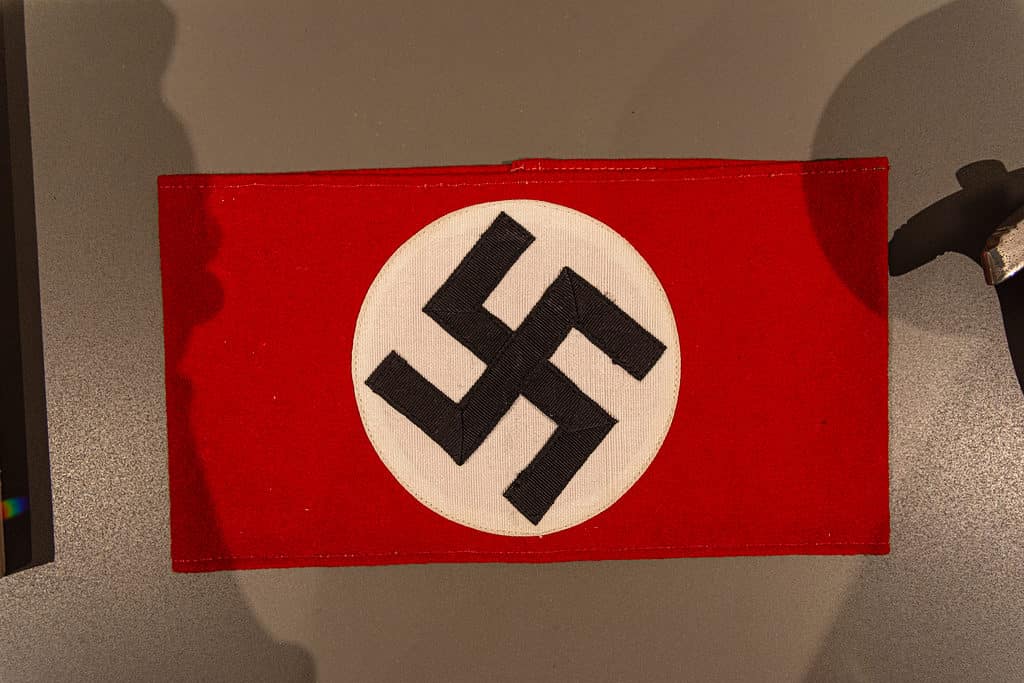
The flag and related imagery, such as the swastika and the Nazi eagle, are symbols of racial hate.
©adolf martinez soler/Shutterstock.com
3 – The Rainbow Flag
This flag represents LGBT pride and social movements, the work of Gilbert Baker, a renowned artist. Created in 1978, the flag signifies the fluidity of human sexuality and inclusiveness.
As its name hints, the flag has the colors of the rainbow to show acceptance of everyone, regardless of their sexuality.
Over the years, it has been controversial, especially in countries where homosexuality is a crime.
Several companies and organizations fly the flag’s colors during pride month to support the LGBT community. But the criticism is that most organizations keep off anything to do with the community once the pride month is over. Many people see it as a marketing ploy by the firms.
Homophobic people express their opposing views by destroying the flag, a crime in some countries, as it shows intolerance and threats towards a specific group.
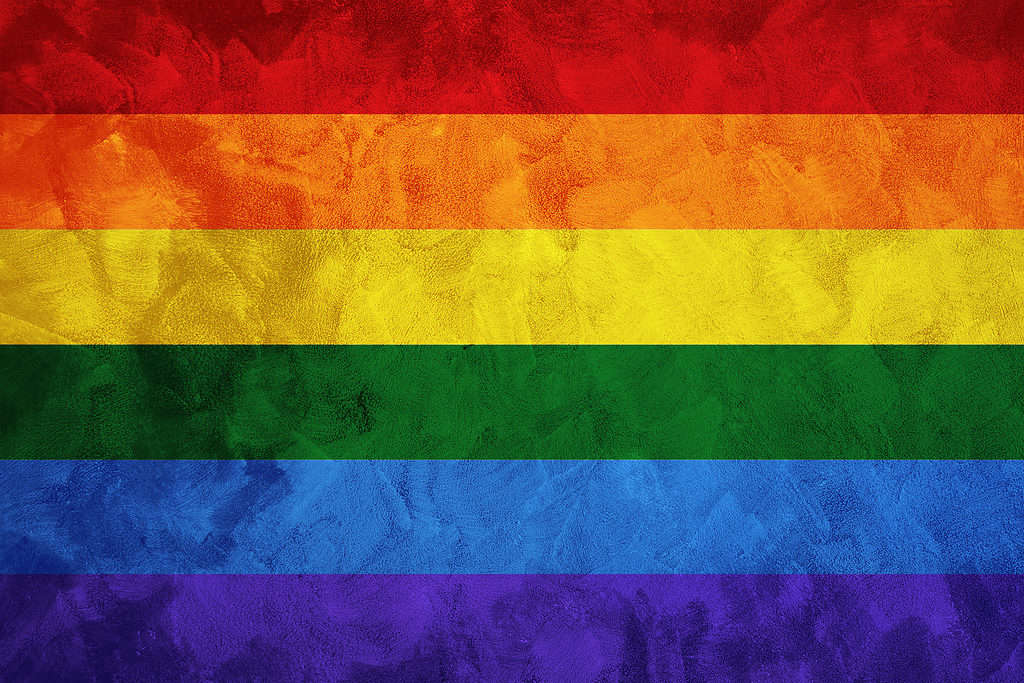
As its name hints, the flag has the colors of the rainbow to show acceptance of everyone, regardless of their sexuality.
©katunes pcnok/Shutterstock.com
4 – The Flag of California
In 1846, a band of murderers, drunks, and thieves in a frontier town hoisted a homemade flag to revolt against the government that had welcomed them.
The rebels’ aim was to take over the country and impose their culture, language, and more on the people of the land. But, beyond anyone’s expectations, the revolt was a success. The unruly misfits captured the frontier town and raised the flag high.
The frontier town was Sonoma in California, and American settlers were the rebels. The rebel group’s standard became the state flag of California, which many consider a symbol of racial prejudice, oppression, and blatant illegality.
The flag of California features the extinct California grizzly bear, the state’s official animal. Behind the flag’s symbolism is controversy regarding the capture of the state from Mexico.
A minor controversy lies in the choice of the animal. The grizzly bear is figurative of environmental protection measures. There have been calls to change the animal to a more successful one, considering the state is no longer home to the grizzly bear.

Many consider this flag a symbol of racial prejudice, oppression, and blatant illegality.
©iStock.com/bndart
5 – The Iraqi Flag
The Iraqi Council of Representatives approved a new flag design in early 2008 to replace the one used in the Saddam era. The new flag was similar to the former, the difference being the removal of the three stars. Kurdish Iraqis called for the stars’ disposal, as it reminded them of the atrocities committed against them during the Al-Anfal Genocide.
The deletion of the stars did not sit well with some groups, specifically Iraqi Arabs. The argument was that the stars did not represent the Ba’athist rule during which the genocide occurred.
Some cities, like Fallujah, refused to fly the flag. There were efforts to change the flag in 2012, but nothing much happened. The 2008 design is still official and generates mixed feelings in the Middle East.
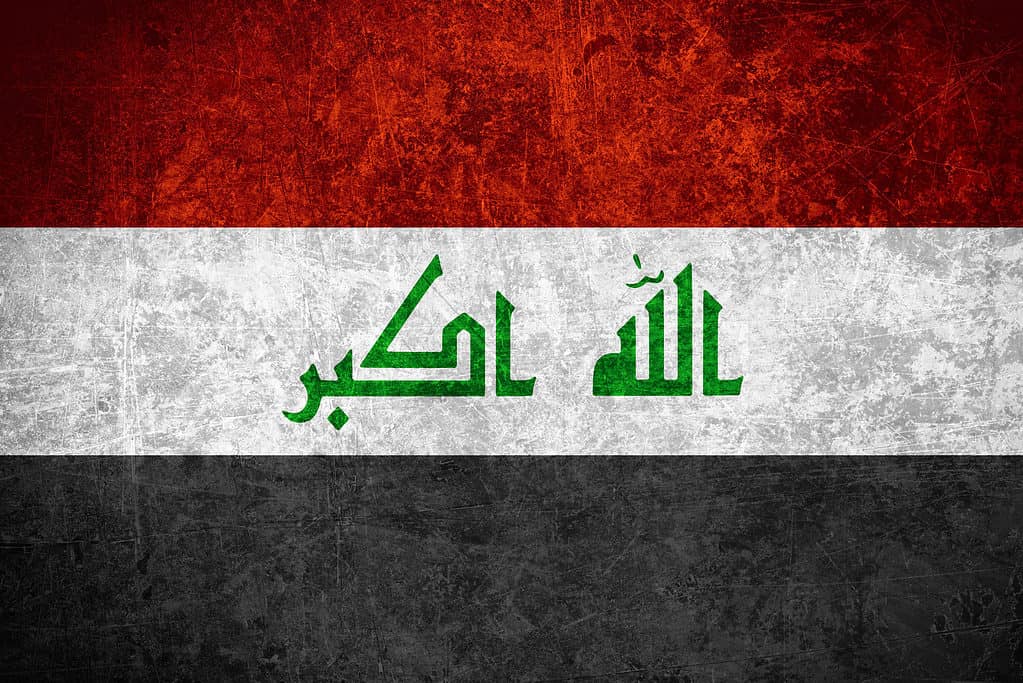
The Iraqi Council of Representatives approved a new flag design in early 2008 to replace the one used in the Saddam era.
©Miro Novak/Shutterstock.com
6 – The Black Panther Party Flag
The Black Panther Party was founded in 1966 by Bobby Seale and Huey Newton at the height of the Civil Rights Movement.
Initially, the party’s primary role was to challenge the excessive police force targeting African Americans in Oakland neighborhoods. However, with time, the party expanded to other cities in the country, fighting for various social causes.
The party’s flag had various designs, the common one featuring a pouncing black panther on a white background.
But why is the flag controversial?
The dispute about the flag is that it represented an organization deemed criminal by some parties. For instance, J. Edgar Hoover, the FBI boss, termed the Black Panther Party a big threat to national security.
The police and other security agencies targeted members of the party, leading to the death of many. To many people, especially African Americans, the flag symbolizes solidarity. For others, it signifies black supremacy and unruliness.
You can spot the flag in African American movements, such as Black Lives Matter.

You can spot the flag in African American movements, such as Black Lives Matter.
©1,169 × 774 pixels, file size: 43 KB, MIME type: image/png – License
7 – North Macedonia’s Kutlesh Flag or The Vergina Sun Flag
North Macedonia attained its independence from Yugoslavia in 1991 and needed a flag to represent its values. It went with the Kutlesh flag, also known as the Vergina Sun flag, which would put it at loggerheads with Greece.
The flag’s imagery portrayed the Vergina Sun via a yellow circle, on a red background, with eight large and eight small rays emerging from the sun.
The Vergina Sun signifies continuity in Greece, linking ancient Macedonia to modern Greece. It became a popular symbol in the country during the 1980s to 1990s, and Greek Macedonians also took pride in it.
As it was an ancient Macedonian symbol, the newly independent North Macedonia used it to show the link to the older state. Greece followed up by imposing an economic blockade on Macedonia in 1994. A year later, Greece sought an exclusive trademark of the Vergina Sun with the World Intellectual Property Organization.
The UN helped settle the dispute, and Macedonia adopted a new flag. Initially, Macedonians and some Greeks were against the change, but it finally sunk in.
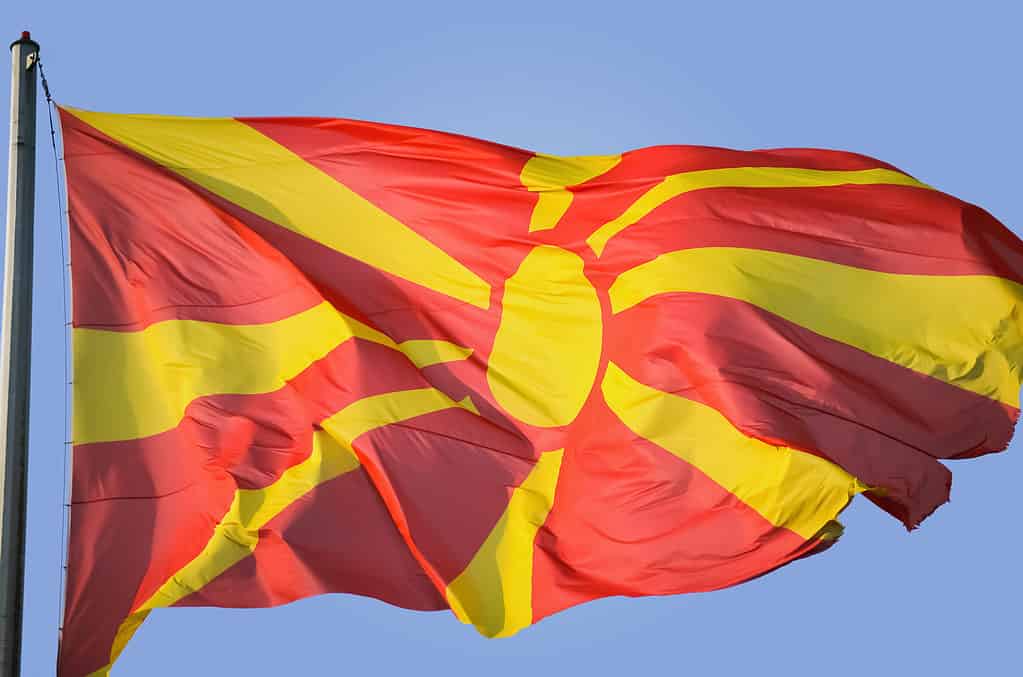
As it was an ancient Macedonian symbol, the newly independent North Macedonia used it to show the link to the older state. Greece followed up by imposing an economic blockade on Macedonia in 1994.
©benjaminac/Shutterstock.com
8 – The Rising Sun Flag of Japan
The Rising Sun flag originated from the Edo period when feudal warlords used it. Years later, it became the official flag of the Imperial Japanese Army and later the naval ensign.
Presently, the Japan Maritime Self-Defense Force uses the flag, with the Japan Self-Defense Forces flying a modified version of the flag. The problem with the Rising Sun flag is its association with Japanese imperialism.
Japanese imperialism is something many people want to forget due to the stronghold the Japanese military had back then on various Asian countries. China and Korea were some of the most affected by Japanese colonialism.
Many people in the two countries compare the Rising Sun flag to that of Nazi Germany or the Confederate flag, a symbol of hate. As a result, some quarters call for the total ban of the flag, especially during international events.
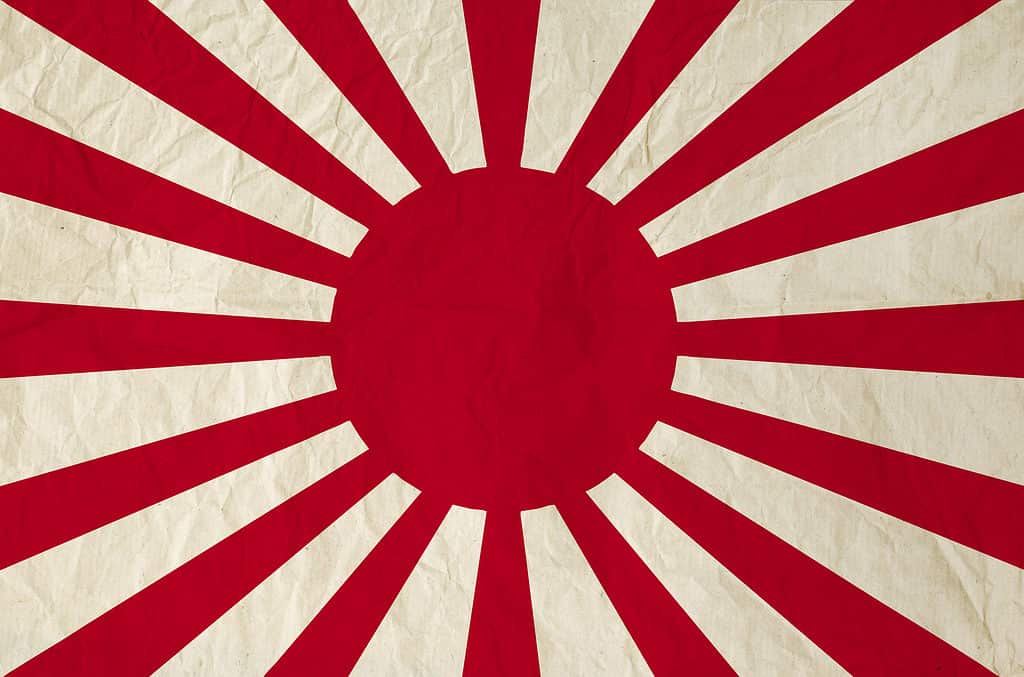
The problem with the Rising Sun flag is its association with Japanese imperialism.
©Mybona/Shutterstock.com
9 – Pre-Islamic Revolution Iranian Flag
Before the Islamic revolution, Iran went by the name “the Imperial State of Iran” under the Pahlavi rule. The country’s flag at the time resembled the current one but featured a lion in the central band. After the Islamic Revolution, the lion was removed, as it signified an oppressive westernizing monarchy.
The dissent with the pre-revolution flag is more of a generational war. Older Iranians who lived during the Pahlavi dynasty wave the flag to show dissatisfaction and protest against the Islamic State and the imposed rules.
On the other hand, the younger generation opposes the flag, as it is a symbol of monarchy and secular democracy.
The opposing ends may, once in a while, destroy the other’s flags to show their solidarity and express their thoughts.

Before the Islamic revolution,
Iran
went by the name “the Imperial State of Iran” under the Pahlavi rule. The country’s flag at the time resembled the current one but featured a lion in the central band.
©SVG file, nominally 6,626 × 3,786 pixels, file size: 113 KB – License
10 – The American Flag
Also known as the Star-Spangled Banner or Stars and Stripes, the American flag has a rich history and has represented the country since 1777. It has been very controversial throughout its history, mostly due to the USA’s military conquest in other countries, especially in the Middle East.
In these countries, it is common to see the residents burning down the blue, white, and red flag due to its symbolism of westernization. Many Arab countries hold this view, with everything about America considered cultural erosion.
To the former soviet states, the flag signified the enemy during the height of the Cold War. The situation still applies to countries that are not on good terms with the US.
Back home, the flag continues to generate controversy from various quarters. Many minority groups view the US flag as a sign of oppression and institutional racism. African Americans deem the flag as a symbol of oppression, dating back to the days of slavery and present-day racism.
For Native Americans, the flag reminds them of the tribulations they underwent at the hands of the colonialists. On the other hand, leftists may destroy the flag as a protest to several government decisions.

The flag of the United States of America has been very controversial throughout its history, mostly due to the USA’s military conquest in other countries, especially in the Middle East.
©Leonard Zhukovsky/Shutterstock.com
Final Thoughts
Flags are crucial for organizations and countries, representing their values, beliefs, and unity. But the flags can be problematic if what they stand for offends other people. This article looked at some of the most controversial flag designs and what makes them so polarizing.
Topping the list are the Confederate and Nazi flags, which have racist connotations. As a result, many countries prohibit the two flags and more that appear threatening to a section of their citizens. Other flags, such as the pre-Islamic revolution Iranian flag, represent the dissent between two generations.
Other controversial flags worth a mention include the old flags of Rhodesia and South Africa, a throwback at the oppressive apartheid regime.
Up Next…
- Countries With Striped Flags
- See Different Country Flags With Purple
- The Flag of Canada: History, Meaning, and Symbolism
The photo featured at the top of this post is © katunes pcnok/Shutterstock.com
Sources
- Britannica, Available here: https://www.britannica.com/topic/flag-of-the-Confederate-States-of-America
- Battlefields, Available here: https://www.battlefields.org/learn/articles/brief-overview-american-civil-war
- Human Dignity Trust, Available here: https://www.humandignitytrust.org/lgbt-the-law/map-of-criminalisation/
- News Times, Available here: https://www.newstimes.com/news/article/Editorial-6512044.php
Thank you for reading! Have some feedback for us? Contact the AZ Animals editorial team.






